
How to Use BME 280 adafrut : Examples, Pinouts, and Specs
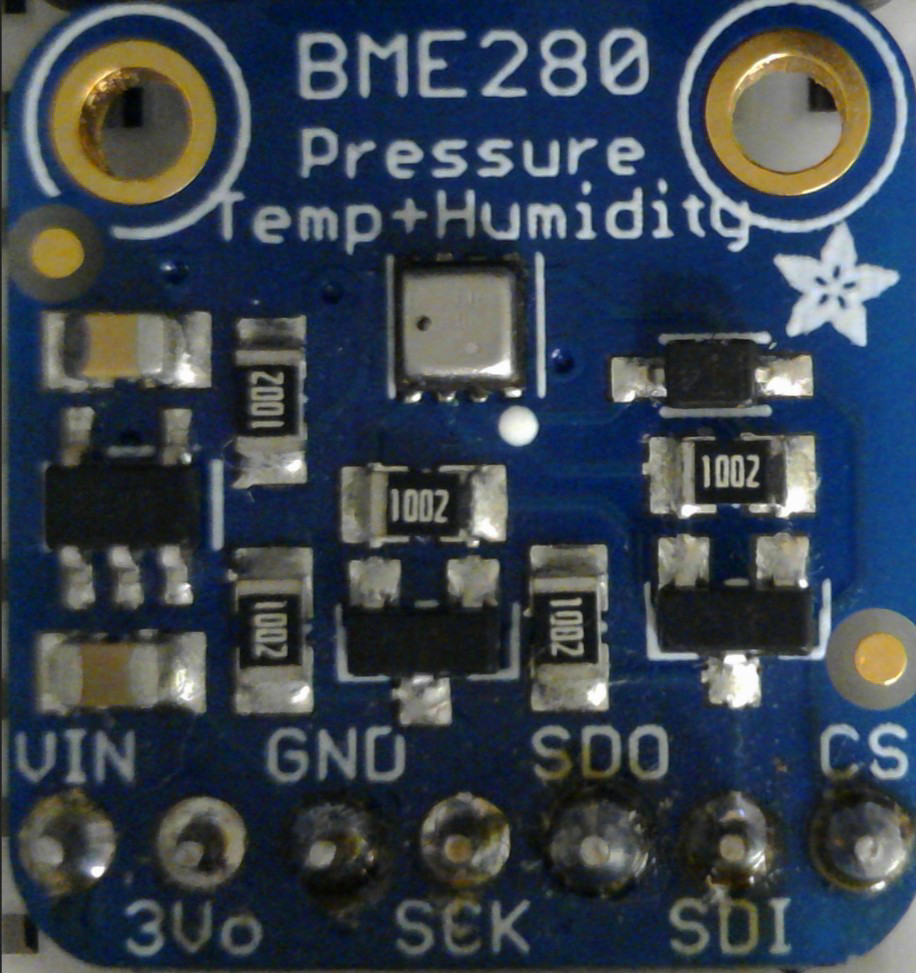
 Design with BME 280 adafrut in Cirkit Designer
Design with BME 280 adafrut in Cirkit DesignerIntroduction
The BME 280, manufactured by Adafruit, is a high-performance sensor designed to measure temperature, humidity, and atmospheric pressure. This versatile sensor is widely used in environmental monitoring, weather stations, and Internet of Things (IoT) applications. Its compact size, low power consumption, and high accuracy make it an ideal choice for projects requiring precise environmental data.
Explore Projects Built with BME 280 adafrut
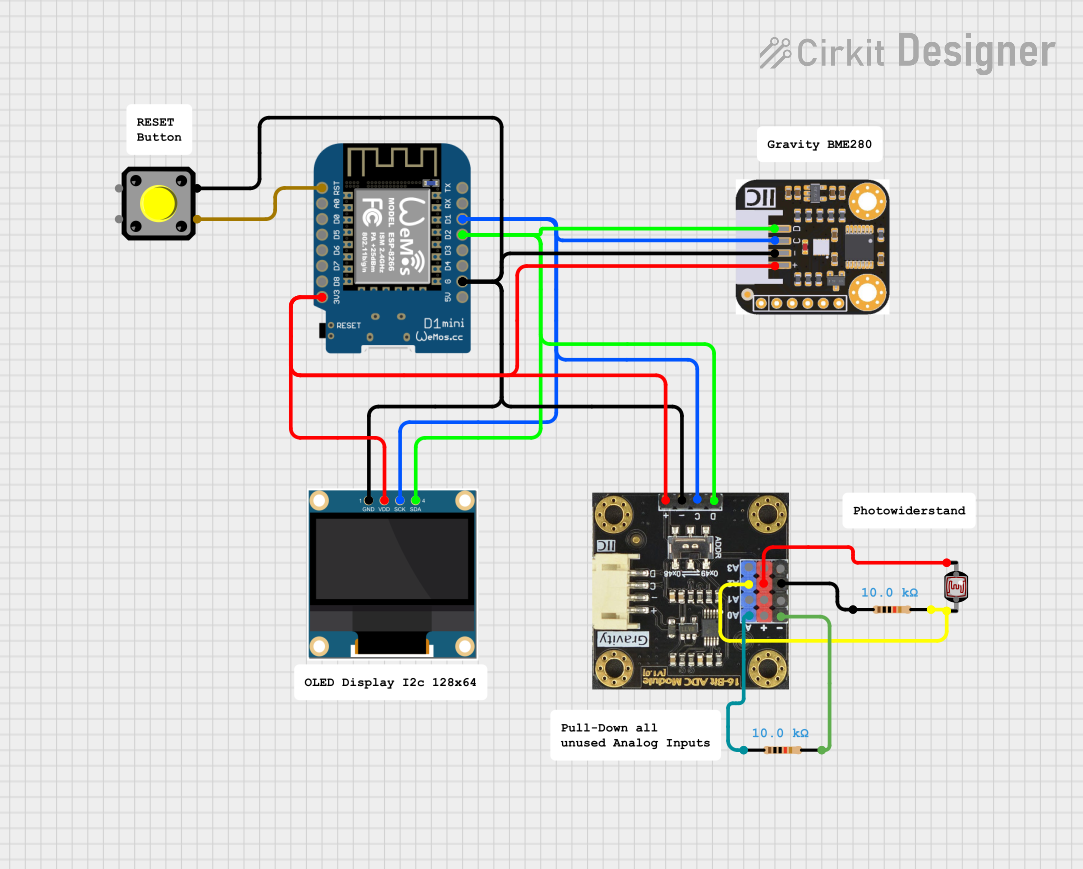
 Open Project in Cirkit Designer
Open Project in Cirkit Designer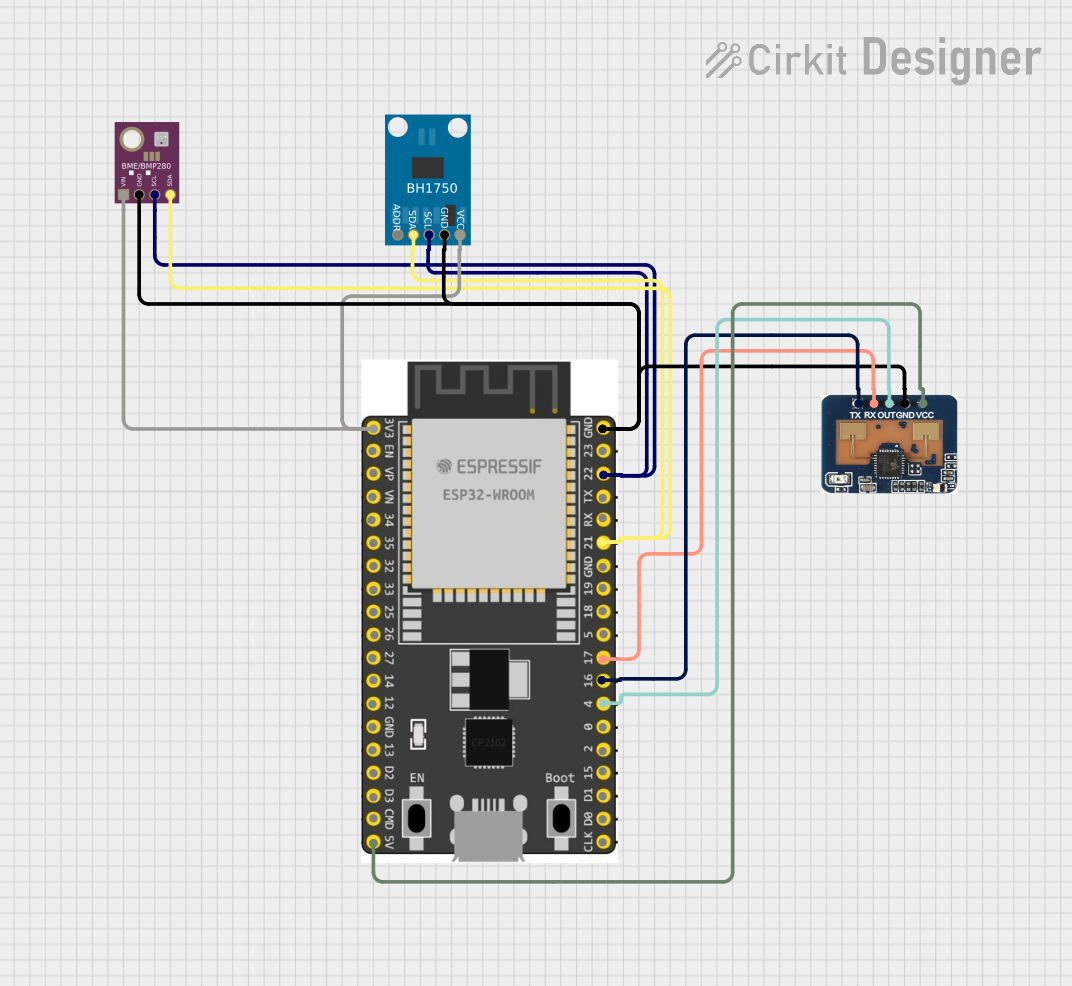
 Open Project in Cirkit Designer
Open Project in Cirkit Designer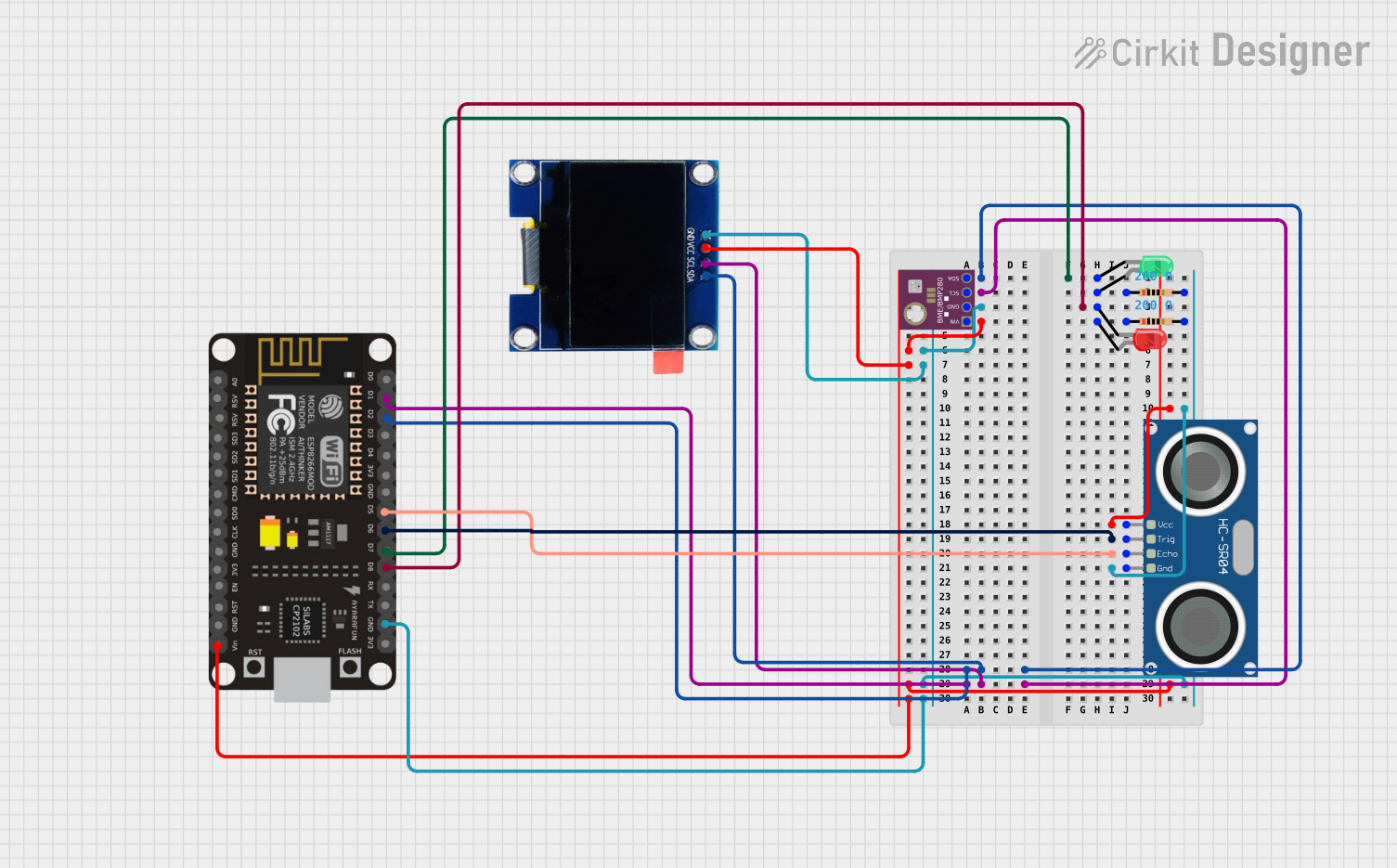
 Open Project in Cirkit Designer
Open Project in Cirkit Designer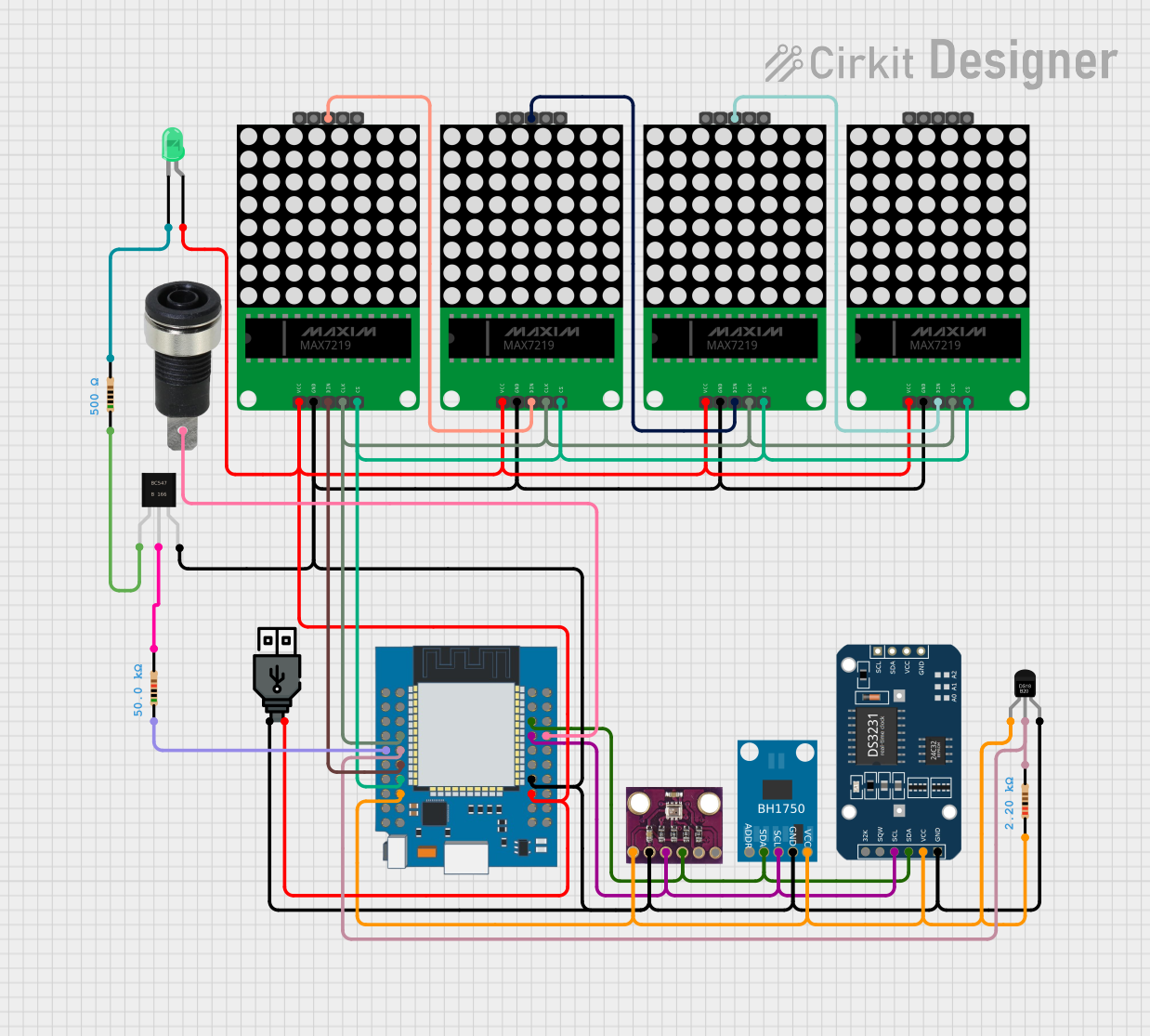
 Open Project in Cirkit Designer
Open Project in Cirkit DesignerExplore Projects Built with BME 280 adafrut

 Open Project in Cirkit Designer
Open Project in Cirkit Designer
 Open Project in Cirkit Designer
Open Project in Cirkit Designer
 Open Project in Cirkit Designer
Open Project in Cirkit Designer
 Open Project in Cirkit Designer
Open Project in Cirkit DesignerCommon Applications and Use Cases
- Weather monitoring systems
- IoT-based environmental sensing
- Altitude measurement in drones and GPS systems
- HVAC (Heating, Ventilation, and Air Conditioning) systems
- Indoor air quality monitoring
Technical Specifications
The BME 280 sensor offers a range of features and specifications that make it suitable for various applications. Below are the key technical details:
Key Specifications
| Parameter | Value |
|---|---|
| Supply Voltage | 1.8V to 3.6V |
| Operating Current | 2.7 µA (at 1 Hz) |
| Temperature Range | -40°C to +85°C |
| Temperature Accuracy | ±1.0°C |
| Humidity Range | 0% to 100% RH |
| Humidity Accuracy | ±3% RH |
| Pressure Range | 300 hPa to 1100 hPa |
| Pressure Accuracy | ±1 hPa |
| Communication Protocols | I2C, SPI |
Pin Configuration and Descriptions
The BME 280 sensor typically comes in a breakout board format with the following pin configuration:
| Pin Name | Description |
|---|---|
| VIN | Power supply input (1.8V to 3.6V) |
| GND | Ground connection |
| SCL | I2C clock line / SPI clock input |
| SDA | I2C data line / SPI data input |
| CS | Chip select for SPI (active low) |
| SD0 | SPI data output / I2C address selection |
Note: For I2C communication, the SD0 pin determines the I2C address:
- Connect SD0 to GND for address
0x76 - Connect SD0 to VIN for address
0x77
Usage Instructions
How to Use the BME 280 in a Circuit
- Power the Sensor: Connect the VIN pin to a 3.3V power source and GND to ground.
- Choose Communication Protocol: Decide whether to use I2C or SPI:
- For I2C, connect SCL and SDA to the corresponding pins on your microcontroller.
- For SPI, connect SCL, SDA, CS, and SD0 to the appropriate SPI pins.
- Pull-Up Resistors: If using I2C, ensure pull-up resistors (typically 4.7kΩ) are connected to the SCL and SDA lines.
- Address Selection: Set the I2C address by connecting the SD0 pin to either GND (
0x76) or VIN (0x77). - Install Libraries: If using an Arduino, install the Adafruit BME280 library via the Arduino IDE Library Manager.
Example Code for Arduino UNO
Below is an example of how to use the BME 280 with an Arduino UNO via I2C:
#include <Wire.h>
#include <Adafruit_Sensor.h>
#include <Adafruit_BME280.h>
// Create an instance of the BME280 sensor
Adafruit_BME280 bme;
// Define I2C address (default is 0x76)
#define BME280_I2C_ADDRESS 0x76
void setup() {
Serial.begin(9600); // Initialize serial communication
while (!Serial); // Wait for serial port to connect (for native USB boards)
// Initialize the BME280 sensor
if (!bme.begin(BME280_I2C_ADDRESS)) {
Serial.println("Could not find a valid BME280 sensor, check wiring!");
while (1); // Halt execution if sensor initialization fails
}
Serial.println("BME280 sensor initialized successfully!");
}
void loop() {
// Read and print temperature, humidity, and pressure
Serial.print("Temperature: ");
Serial.print(bme.readTemperature());
Serial.println(" °C");
Serial.print("Humidity: ");
Serial.print(bme.readHumidity());
Serial.println(" %");
Serial.print("Pressure: ");
Serial.print(bme.readPressure() / 100.0F); // Convert Pa to hPa
Serial.println(" hPa");
delay(2000); // Wait 2 seconds before the next reading
}
Important Considerations and Best Practices
- Power Supply: Ensure the sensor is powered within its specified voltage range (1.8V to 3.6V).
- I2C Pull-Up Resistors: Use appropriate pull-up resistors on the I2C lines to ensure reliable communication.
- Environmental Factors: Avoid exposing the sensor to water or dust, as this may affect its accuracy.
- Calibration: The sensor is factory-calibrated, but additional calibration may be required for specific applications.
Troubleshooting and FAQs
Common Issues and Solutions
Sensor Not Detected:
- Verify the wiring and ensure the correct I2C address is used.
- Check for proper pull-up resistors on the I2C lines.
- Ensure the sensor is powered within the specified voltage range.
Incorrect Readings:
- Ensure the sensor is not exposed to extreme environmental conditions.
- Verify that the sensor is not placed near heat sources or in direct sunlight.
Communication Errors:
- Double-check the connections for loose or incorrect wiring.
- Ensure the correct communication protocol (I2C or SPI) is selected in the code.
FAQs
Q: Can the BME 280 measure altitude?
A: Yes, the BME 280 can calculate altitude based on atmospheric pressure readings. Use the readAltitude() function in the Adafruit library.
Q: What is the maximum cable length for I2C communication?
A: The maximum cable length depends on the pull-up resistor values and the I2C clock speed. For standard setups, keep the cable length under 1 meter for reliable communication.
Q: Can the BME 280 operate at 5V?
A: No, the BME 280 operates at a maximum voltage of 3.6V. Use a level shifter if interfacing with a 5V microcontroller.
Q: Is the BME 280 waterproof?
A: No, the BME 280 is not waterproof. Use a protective enclosure if deploying it in outdoor or humid environments.